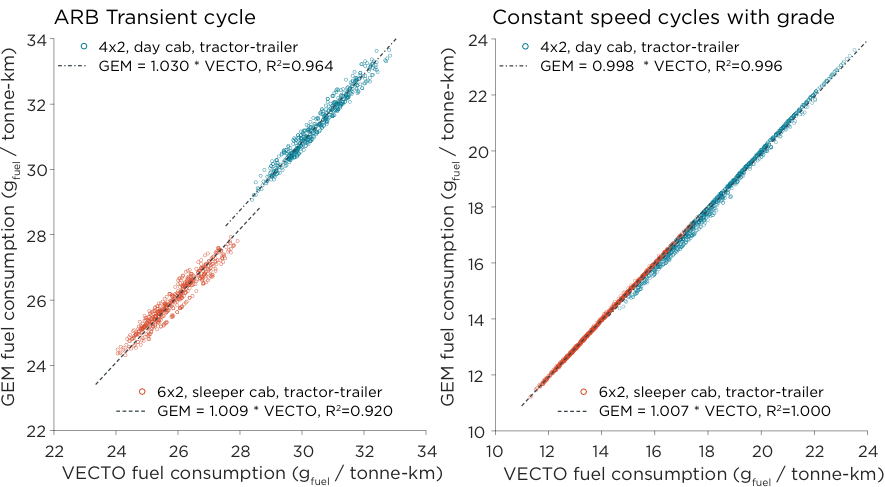White paper
Fuel consumption simulation of HDVs in the EU: Comparisons and limitations
The CO2 certification procedures for HDVs in the EU and the United Stated use a combination of component testing and vehicle simulation to assign official CO2 emission and fuel consumption values.
This paper analyzes the model structure, simulation flow, and limitations of the regulatory simulation tool used in the EU (VECTO) and compares it against the regulatory tool used in the United States (GEM). The analysis shows fundamental differences in the modeling approach between the regions. VECTO uses a backward-looking model architecture, in which the simulation flow occurs in the opposite direction of the actual energy and torque flows. GEM, on the other hand, uses a forward-looking architecture in which the driver interacts directly with the vehicle through the accelerator pedal, and the simulation proceeds in the same direction as the energy and torque flows.
To understand the impacts of the intrinsic differences between VECTO and GEM on the simulated fuel consumption, each model was used to simulate the same set of 3000 vehicle/drive cycle combinations. The simulated fuel consumption results are shown below.

The results show that the differences in model architecture do not have a significant impact on the results of the studied models. Despite the fundamental differences posed by the use of backward-looking simulation in VECTO and forward-looking simulation in GEM, the comparison exercise shows very good agreement between the simulation tools. The small disagreements observed between GEM and VECTO, and the moderate unaccounted variability of the VECTO-GEM correlation models, can be attributed to the differences in shifting strategies used by each tool. It can be concluded that for a given technology improvement, the two models simulate similar CO2 emissions and fuel consumption reduction in relative and absolute terms.
